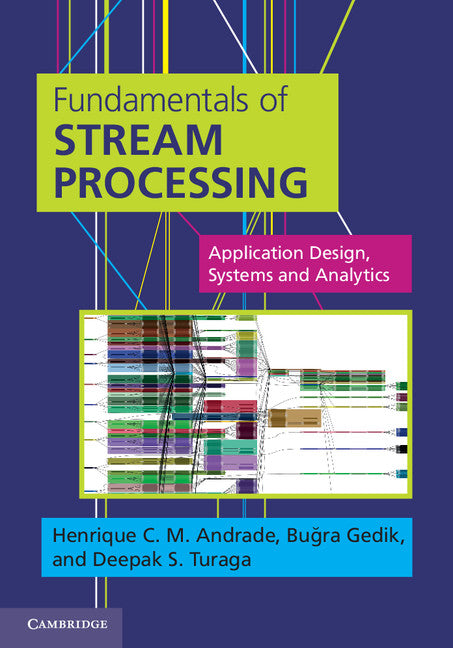Freshly Printed - allow 8 days lead
Couldn't load pickup availability
Fundamentals of Stream Processing
Application Design, Systems, and Analytics
This book teaches fundamentals of stream processing, covering application design, distributed systems infrastructure, and continuous analytic algorithms.
Henrique C. M. Andrade (Author), Bu?ra Gedik (Author), Deepak S. Turaga (Author)
9781107015548, Cambridge University Press
Hardback, published 13 February 2014
558 pages, 191 b/w illus. 17 tables 10 exercises
24.4 x 17 x 3 cm, 1.13 kg
Stream processing is a novel distributed computing paradigm that supports the gathering, processing and analysis of high-volume, heterogeneous, continuous data streams, to extract insights and actionable results in real time. This comprehensive, hands-on guide combining the fundamental building blocks and emerging research in stream processing is ideal for application designers, system builders, analytic developers, as well as students and researchers in the field. This book introduces the key components of the stream computing paradigm, including the distributed system infrastructure, the programming model, design patterns and streaming analytics. The explanation of the underlying theoretical principles, illustrative examples and implementations using the IBM InfoSphere Streams SPL language and real-world case studies provide students and practitioners with a comprehensive understanding of such applications and the middleware that supports them.
Part I. Fundamentals: 1. What brought us here?
2. Introduction to stream processing
Part II. Application Development: 3. Application development - the basics
4. Application development - data flow programming
5. Large-scale development - modularity, extensibility, and distribution
6. Application engineering - debugging and visualization
Part III. System Architecture: 7. Architecture of a stream processing system
8. InfoSphere streams architecture
Part IV. Application Design and Analytics: 9. Design principles and patterns for stream processing applications
10. Stream processing and mining algorithms
Part V. Case Studies: 11. End-to-end application examples
Part VI. Closing Notes: 12. Conclusion.
Subject Areas: Signal processing [UYS], Computer networking & communications [UT], Data mining [UNF], Algorithms & data structures [UMB]


